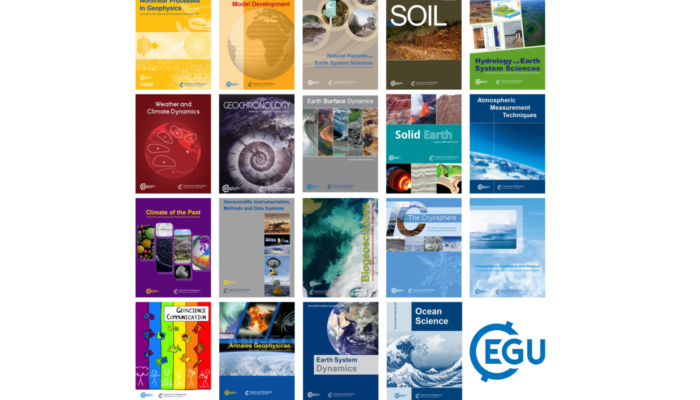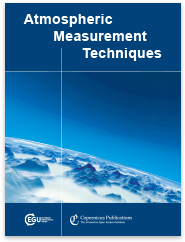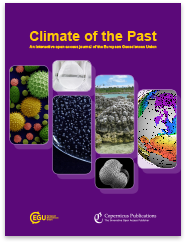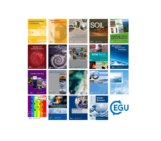
Each month we feature specific Divisions of EGU and during the monthly GeoRoundup we will be putting the journals that publish science from those Divisions at the top of the Highlights roundup. For September, the Divisions we are featuring are: Atmospheric Science (AS), and Climate: Past, Present and Future (CL). They are served by the journals: Geoscientific Model Development (GMD), Annales Geophysicae (ANGEO), Atmospheric Chemistry and Physics (ACP), Atmospheric Measurement Techniques (AMT), Climate of the Past (CP), Earth System Dynamics (ESD), SOIL and Weather and Climate Dynamics (WCD).
Featured highlights
 Better representation of dust can improve climate models with too weak an African monsoon – 6 September 2021
Better representation of dust can improve climate models with too weak an African monsoon – 6 September 2021
Earth system models have persistent biases that impinge on our ability to make robust future regional predictions of precipitation. For the last 15 years, there has been little improvement in these biases. This work presents an accurate representation of dust absorption based upon observed dust mineralogical composition and size distribution. The striking result is that this more accurate representation improves tropical precipitations for climate models with too weak an African monsoon.
The long-term transport and radiative impacts of the 2017 British Columbia pyrocumulonimbus smoke aerosols in the stratosphere – 22 September 2021
Interactions of extreme fires with weather systems can produce towering smoke plumes that inject aerosols at very high altitudes (> 10 km). Three such major injections, largest at the time in terms of emitted aerosol mass, took place over British Columbia, Canada, in August 2017. We model the transport and impacts of injected aerosols on the radiation balance of the atmosphere. Our model results match the satellite-observed plume transport and residence time at these high altitudes very closely.
Atmospheric Measurement Techniques:
 Characterization of dark current signal measurements of the ACCDs used on board the Aeolus satellite – 3 September 2021
Characterization of dark current signal measurements of the ACCDs used on board the Aeolus satellite – 3 September 2021
This paper reports on dark current signal anomalies of the detectors used on board the ESA’s Earth Explorer satellite Aeolus during the first 1.5 years in orbit. After introducing sophisticated algorithms to classify dark current anomalies according to their characteristics, the impact of the different kinds of anomalies on wind measurements is discussed. In addition, mitigation approaches for the wind retrieval are presented and potential root causes are discussed.
Iodide CIMS and m∕z 62: the detection of HNO3 as NO3− in the presence of PAN, peroxyacetic acid and ozone – 13 September 2021
We demonstrate in laboratory experiments that the formation of IOx anions (formed in reactions of I− with O3) or acetate anions (formed e.g. by the reaction of I− with peracetic acid) results in unexpected sensitivity of an iodide chemical ionisation mass spectrometer (I-CIMS) to HNO3 at a mass-to-charge ratio of 62. This helps explain observations of apparent high daytime levels of N2O5. Airborne measurements using I-CIMS confirm these conclusions.
Physical characteristics of frozen hydrometeors inferred with parameter estimation – 17 September 2021
Satellite observations sensitive to cloud and precipitation help improve the quality of weather forecasts. However, they are sensitive to things that models do not forecast, such as the shapes and sizes of snow and ice particles. These details can be estimated from the observations themselves and then incorporated in the satellite simulators used in weather forecasting. This approach, known as parameter estimation, will be increasingly useful to build models of poorly known physical processes.
The nano-scanning electrical mobility spectrometer (nSEMS) and its application to size distribution measurements of 1.5–25 nm particles – 20 September 2021
We present the design, modeling, and experimental characterization of the nano-scanning electrical mobility spectrometer (nSEMS), a recently developed instrument that probes particle physical properties in the 1.5–25 nm range. The nSEMS has proven to be extremely powerful in examining atmospheric nucleation and the subsequent growth of nanoparticles in the CERN CLOUD experiment, which provides a valuable asset to study atmospheric nanoparticles and to evaluate their impact on climate.
Rapid measurement of RH-dependent aerosol hygroscopic growth using a humidity-controlled fast integrated mobility spectrometer (HFIMS) – 27 September 2021
In this study, we present a newly developed instrument, the humidity-controlled fast integrated mobility spectrometer (HFIMS), for fast measurements of aerosol hygroscopic growth. The HFIMS can measure the distributions of particle hygroscopic growth factors at six diameters from 35 to 265 nm under five RH levels from 20 to 85 % within 25 min. The HFIMS significantly advances our capability of characterizing the hygroscopic growth of atmospheric aerosols over a wide range of relative humidities.
 Influence of the representation of convection on the mid-Holocene West African Monsoon – 15 September 2021
Influence of the representation of convection on the mid-Holocene West African Monsoon – 15 September 2021
This paper investigates the impact of explicitly resolving convection on the mid-Holocene West African Monsoon rain belt by employing the ICON climate model in high resolution. While the spatial distribution and intensity of the precipitation are improved by this technique, the monsoon extents further north and the mean summer rainfall is higher in the simulation with parameterized convection.
Other highlights
Drought effects on leaf fall, leaf flushing and stem growth in the Amazon forest: reconciling remote sensing data and field observations – 1 September 2021
Dynamics of salt intrusion in the Mekong Delta: results of field observations and integrated coastal–inland modelling – 24 September 2021
Natural Hazards and Earth System Sciences:
Spatial and temporal subsidence characteristics in Wuhan (China), during 2015–2019, inferred from Sentinel-1 synthetic aperture radar (SAR) interferometry – 8 September 2021
Recent degradation of interior Alaska permafrost mapped with ground surveys, geophysics, deep drilling, and repeat airborne lidar – 10 September 2021


